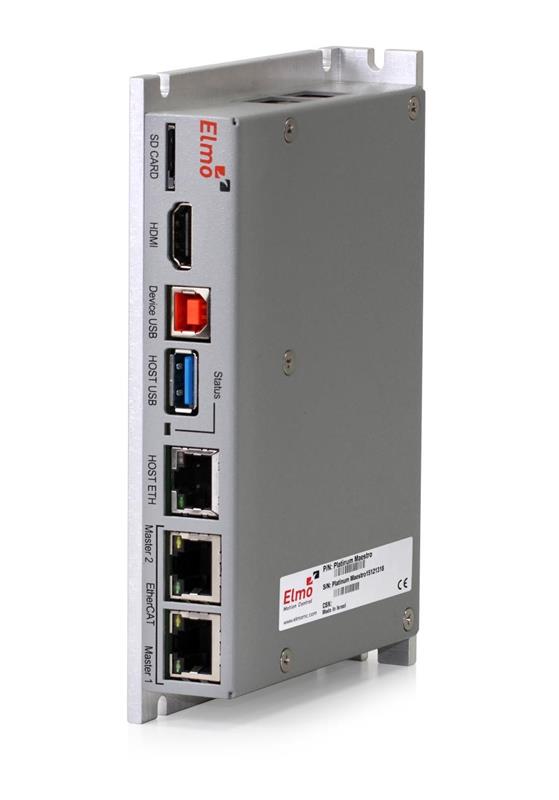This is achieved using a programmable bevel-tip needle (PBN), constructed of four flexible interlocking plastic segments. Each segment has a channel for drug delivery and a channel containing a fibre cable used for shape sensing. Powered by a small ironless motor, each segment can move independently, allowing the PBN to change direction and be guided around brain structures to the right area, avoiding damage to healthy areas.
This demanding application required a motion controller capable of high synchronisation of the four axes, while achieving a positional accuracy down to 10μm.
Each segment motor is driven by an Elmo Gold-Twitter servo drive, while all four are controlled by an Elmo Platinum Maestro motion controller.
 Platinum Maestro uses EtherCAT, an Ethernet protocol for motion control applications. The motion controller can command the axes at a 250μs EtherCAT cycle rate, allowing it to quickly respond to or command the PBN to change direction to move around obstructions and avoid damage to brain structures.
Platinum Maestro uses EtherCAT, an Ethernet protocol for motion control applications. The motion controller can command the axes at a 250μs EtherCAT cycle rate, allowing it to quickly respond to or command the PBN to change direction to move around obstructions and avoid damage to brain structures.
Professor Ferdinando Rodriqugez Baena, project coordinator for EDEN2020, says: “The system will be able to sense continuously deforming brain anatomy at unmatched accuracy, precision and update rates.”
Gold-Twitter was chosen because its compact size allowed the robotic surgery station to be portable. The servo drive also produces a very low level of electro-magnetic interference, avoiding distortion and disruption to medical imaging processes.
The Platinum Maestro is an off-the-shelf motion controller offering tools and features that simplify and streamline the implementation of machine motion applications. Simple interconnection of the Platinum Maestro to all drives, automatic EtherCAT configurations to all nodes and control over all drive parameters from the Platinum Maestro were other major benefits.











